
The Winter ‘16 release contained some of my favorite things, but the Spring ‘16 release has swept me off my feet! Here are the new features and enhancements that I love the most.

Easily Reorder Criteria in your Process with Drag and Drop
This has been on my wish list since I built my first process. Now, instead of having to delete and re-create criteria nodes to get them into the correct order, you can simply move them with this handy little icon in the upper right. If you have processes with lots of criteria that you have to update regularly, this will be a massive time-saver for you.
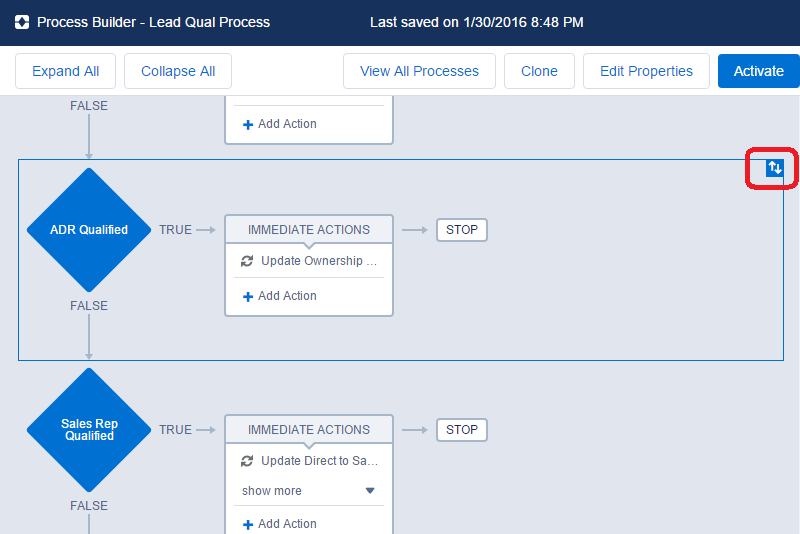

No more re-typing Process Name/Description for new versions
This is such a little thing… but also such a huge thing! When you clone a Process as a new version, the name and description will automatically be copied so that you don’t have to type them in again. Since I like to write very thorough (some might say “long-winded”) Process descriptions, this will be very helpful.

Manage Everyone’s Reports and Dashboards
If you haven’t used Workbench before, you are missing out! (And you should check out my guest post on Admin Hero’s blog.) Now, when running a query on reports or dashboards in Workbench, you can add USING SCOPE AllPrivate to get users’ private reports or dashboards in your query results.(See the release notes here for sample queries.) Additionally, even if you run a query without the AllPrivate scope, your results will still contain personal reports/dashboards.
Some downsides to this:
- Folder Name is not something that you can include in a Report query in Workbench – so while you can pull private reports into your query, you won’t know what folder they are in.
- This feature is not available in a Salesforce report on Reports.
Note: As of this post, it is not yet available in Workbench – but it is in the developer console in your Spring ’16 sandbox. Workbench should be updated once Spring ’16 has been rolled out to all instances.

This is one of those features that I would have wished for if I knew it was possible! Go to Setup | Security Controls | Health Check – and you will see an instant assessment of your org’s security settings. For each security component, the health check displays your settings, Salesforce’s baseline standard, and even a link so that you can go directly to your settings to update them.
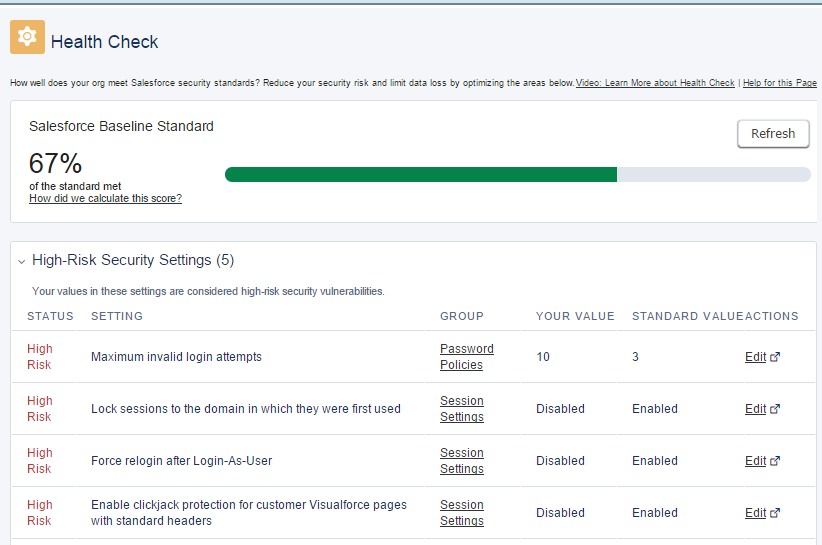

Import Contacts as Campaign Members
This will be extremely helpful for Marketing teams, admins, or anyone who imports Campaign Members. Previously, we could only import Campaign Members as Leads:
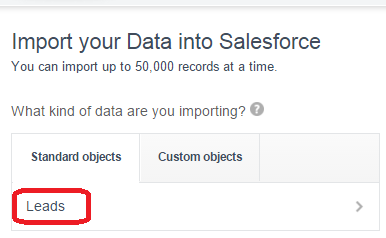
So if we wanted to import contacts, and add them to a campaign, it became a longer process. But now, we have the option of importing them either as Leads or as Contacts and Accounts:
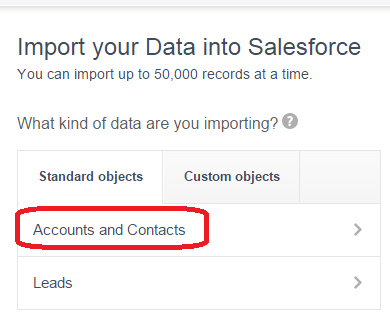

This is a huge improvement. In our Salesforce org, we like to build out any major new configuration in a developer sandbox, then push it to the full sandbox for testing when development is complete. When a lot of projects are going on at once, we sometimes use up all of our dev sandboxes. So this is great news! With the Spring release, the number of available dev sandboxes will increase as follows:
- Enterprise Edition: Increase from 1 to 25
- Unlimited Edition: Increase from 15 to 50
- Performance Edition: Increase from 30 to 100

Have you ever been frustrated by picklist field values that aren’t supposed to be there? In my org, the main cause of this is a mass upload/update containing picklist values that are misspelled, out-of-date, or just plain wrong – because you can put anything into a picklist field if you are using Data Loader or a similar tool.
I was lucky enough to get in on the pilot for this feature – in combination with the Global Picklist pilot (get into that one if you can!) – and it’s one of my favorite things ever! Simply check a box when you create a new picklist field:
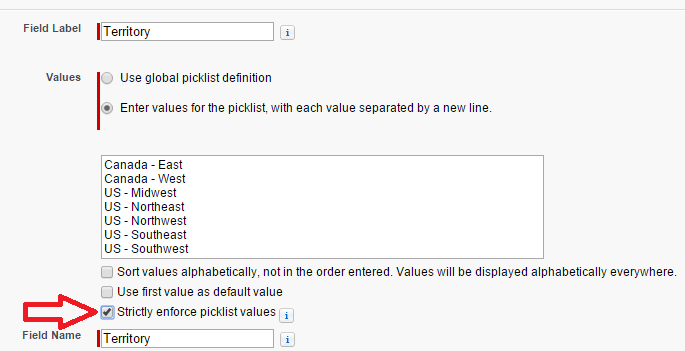
What this does is enforce picklist values not only in the UI, but through the API – for instance, if you attempt to mass update records via Data Loader with picklist values that are not in the list, you will get an error message. Hooray for data integrity!!

Sometimes a Chatter group feed can get overwhelming to read – much like my Facebook news feed (filled with thousands of posts I don’t need to read, and a few gems that I wish I could pick out more easily). Often, the weekly digest email doesn’t even include all posts to the group because there are so many!
That’s where this new feature really shines. A Chatter broadcast group restricts posts to group owners and managers only. This way, you can have groups that are strictly for important updates or company announcements.
Chatter broadcast groups can be either public or private – all you need to do is to check the “Broadcast Only” box when creating the new group.
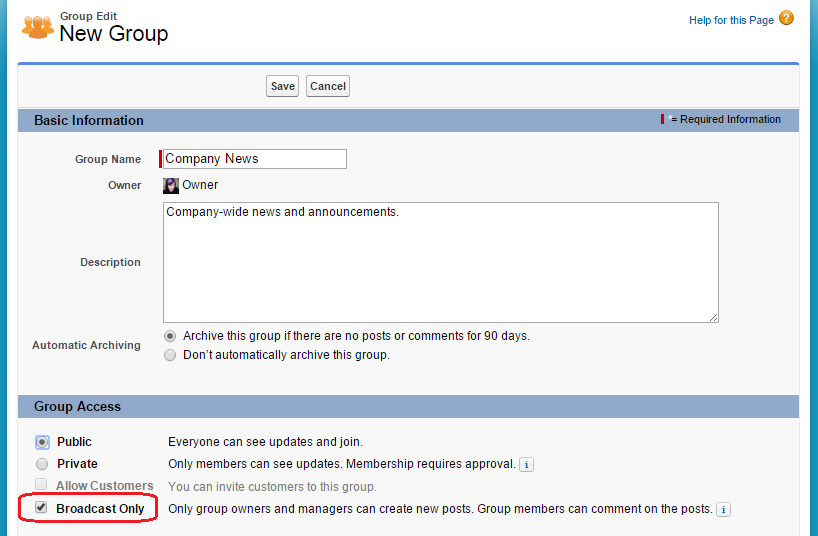

Lightning Experience Enhancements
Since my team has not yet begun our Lightning Experience testing and rollout, I did not intend to include Lightning features in this post. However, the additions to LEX in this release are definitely worth noting – most of them are things that my org would not be able to live without! Here are just a few:
- Inline editing (this was my deal-breaker)
- List views
- Opportunity Teams
- Campaigns (beta)
- Assets
- Person Accounts
- Dashboard improvements
- Improved Account Insights, and the ability to send feedback
- Activity Timeline filtering

As with any release, it’s a great idea to test as many of the new features as possible, and communicate any visible changes to your users. Check out the full release notes here. Happy Spring!
